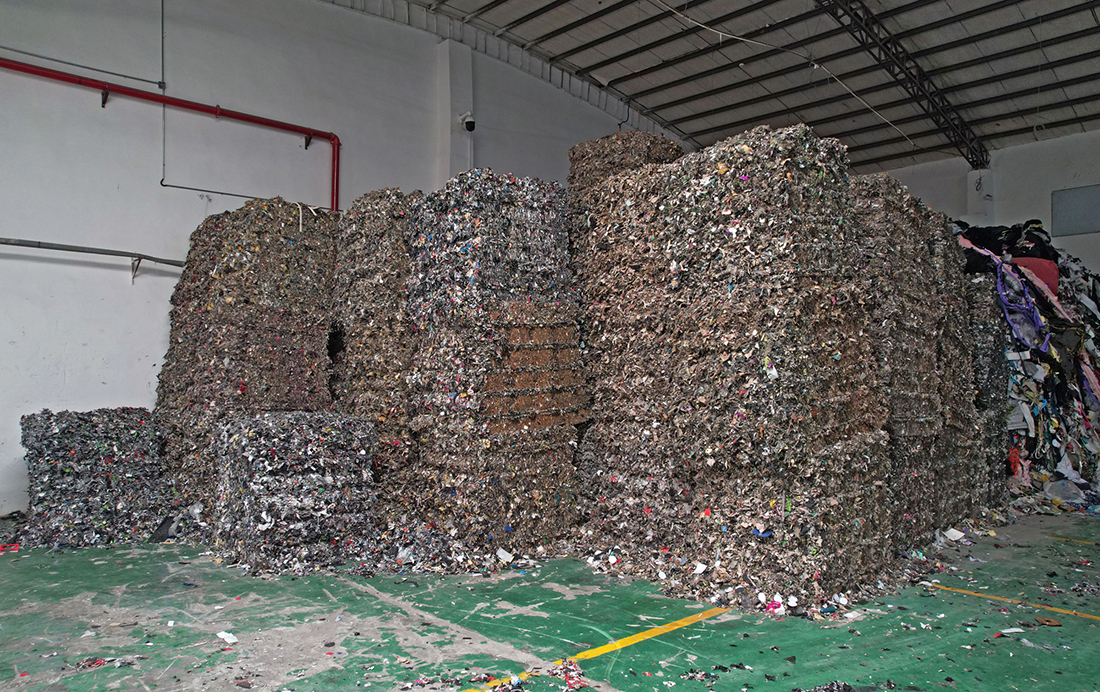Unlocking Cement Efficiency: RDF as the Game-Changer for Top Performers
In 2025, China’s national energy-efficiency program spotlighted leading cement producers achieving record-low energy use. Huaxin Cement and Hongshi Group stood out as industry front-runners, showing how large-scale integration of Refuse-Derived Fuel (RDF) can redefine low-carbon production. Their success proves that substituting fossil fuels with well-prepared RDF is not just an environmental commitment—it’s a decisive driver of efficiency and cost competitiveness.

Efficiency Leaders Set New Benchmarks
Huaxin Cement’s Chongqing subsidiary led the nation with a clinker-specific comprehensive energy consumption of just 59.9 kgce/t, followed by Huaxin Sangzhi (77.67 kgce/t) and Huaxin Huangshi (80.61 kgce/t). Hongshi Group’s Yichun plant ranked close behind at 81.81 kgce/t—all significantly below the industry average.
A shared factor among these high performers is the aggressive deployment of RDF as an alternative fuel.

At Yichun Hongshi, a 100,000 t/y RDF utilization retrofit was completed in 2023, transforming mixed solid waste into reliable kiln fuel. In 2024, the plant co-processed 70,000 tons of RDF, achieving a 27.14% substitution rate, saving 38,000 tons of standard coal annually and reducing fuel costs by over $1.4 million. These results demonstrate the tangible economic and environmental gains achievable through advanced RDF adoption.
From Waste to Energy: RDF’s Expanding Role
As a key link in the circular economy, RDF converts non-recyclable municipal and industrial solid waste into a high-calorific fuel suitable for cement kilns. Compared with coal, RDF delivers a dual advantage—reducing both energy consumption and carbon emissions—while turning waste liabilities into valuable energy assets.
A typical 100,000 t/y RDF production line showcases the potential:
· Waste Processing: Handles around 120,000 tons of industrial waste annually—such as plastic scraps, paper sludge, and textile offcuts—achieving an 83% utilization rate, far surpassing landfill efficiency.
· Energy Efficiency: With an average calorific value of 4,000 kcal/kg (versus 5,000 kcal/kg for coal), 100,000 tons of RDF can replace about 70,000 tons of coal while maintaining kiln stability. Industry data shows that every 10% RDF substitution cuts energy use by 4–5 kgce/t.
· Carbon Reduction: Each line can reduce up to 220,000 tons of CO₂ emissions per year, based on IPCC guidelines and real-world monitoring, while also avoiding methane release from landfills.
Harden Machinery: Enabling High-Quality RDF Production
At the core of these achievements lies Harden Machinery Ltd.’s advanced RDF preparation technology. Built on precision shredding, intelligent sorting, and adaptive preprocessing, Harden’s systems convert diverse waste streams into consistent, high-calorific RDF—fueling efficient, stable, and high-ratio kiln co-firing.
1. Versatile Feedstock Handling
Designed for flexibility, Harden’s system handles up to 90% of global solid waste types—from textile waste and biomass to C&D waste (Construction and Demolition waste) and oversize MSW fractions. Tunable preprocessing ensures steady throughput, even with mixed or high-impurity inputs, minimizing downtime and maximizing diversion from landfills.
2. Precision Shredding & Sorting for Premium Quality
Dual-stage shredding with wear-resistant alloy blades and variable-speed control produces uniform material size, while integrated air and magnetic separators remove metals, stones, and inert contaminants. The result is clean, stable RDF that ensures consistent combustion, steady kiln temperatures, and superior clinker quality.
3. Engineered for High-Ratio, High-Volume Operations
Built around the principles of “finer shredding, faster sorting, cleaner separation,” Harden’s RDF preparation system is designed for large-scale, continuous production, processing 10–25 t/h per line with consistent performance. Output RDF achieves elevated calorific values and reduced chlorine/sulfur content—enabling substitution rates above 30% without compromising kiln performance or emissions standards.
Innovation Spotlight: One-Step RDF Shredding
In 2025, Harden introduced a new one-step shredder that combines fine reduction (to < 50 mm) with high-capacity output in one compact system. This innovation streamlines RDF production, cutting energy use and maintenance while improving throughput and particle consistency—perfectly suited for cement, power, and recycling industries seeking efficient waste-to-fuel conversion.

Toward a Greener Horizon
Energy leadership is not an endpoint—it’s a springboard for industrial decarbonization. The success of Huaxin and Hongshi underscores the transformative role RDF can play in modern cement production, turning waste into a sustainable energy source and lowering carbon footprints across the sector.
As global cement producers accelerate toward 2030 carbon targets, Harden Machinery stands ready to deliver proven, scalable RDF solutions—empowering plants worldwide to achieve higher efficiency, lower costs, and a cleaner energy future.

